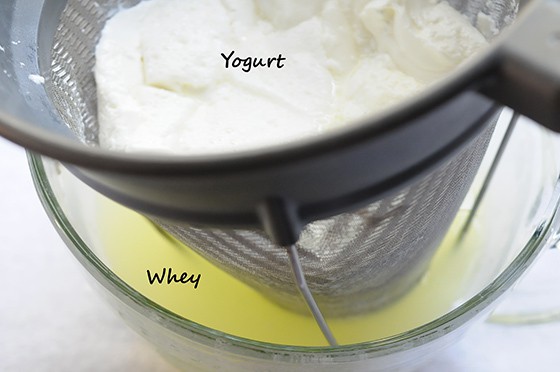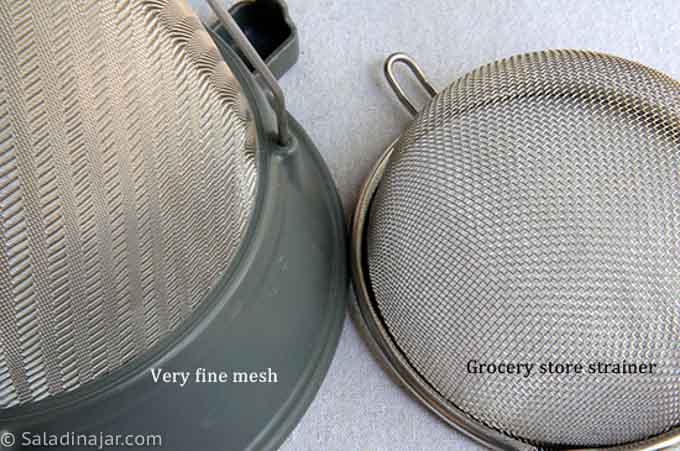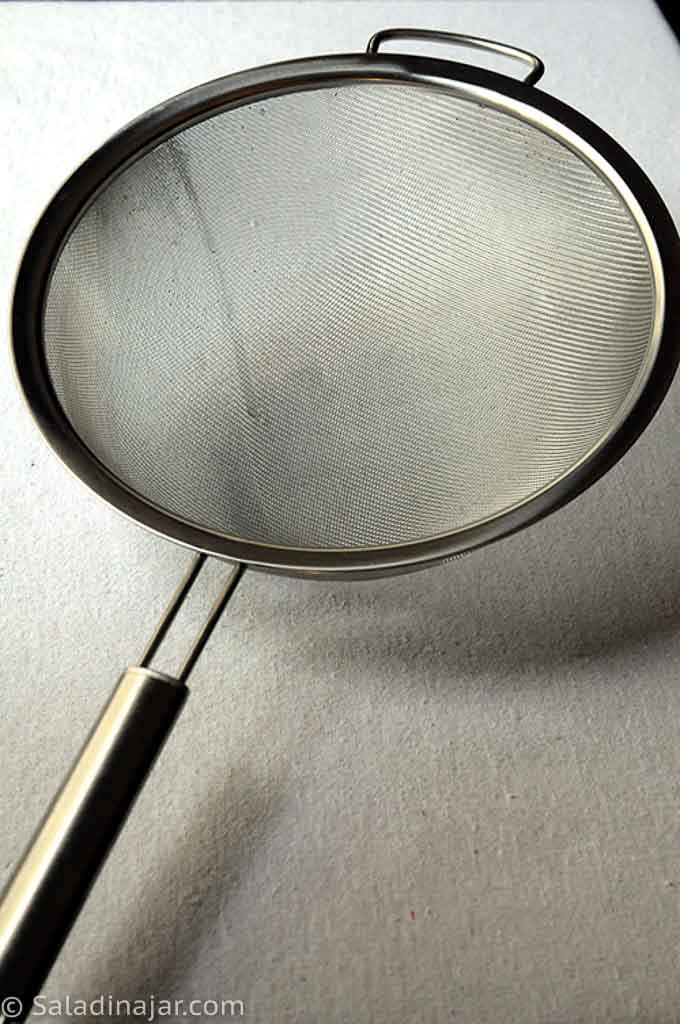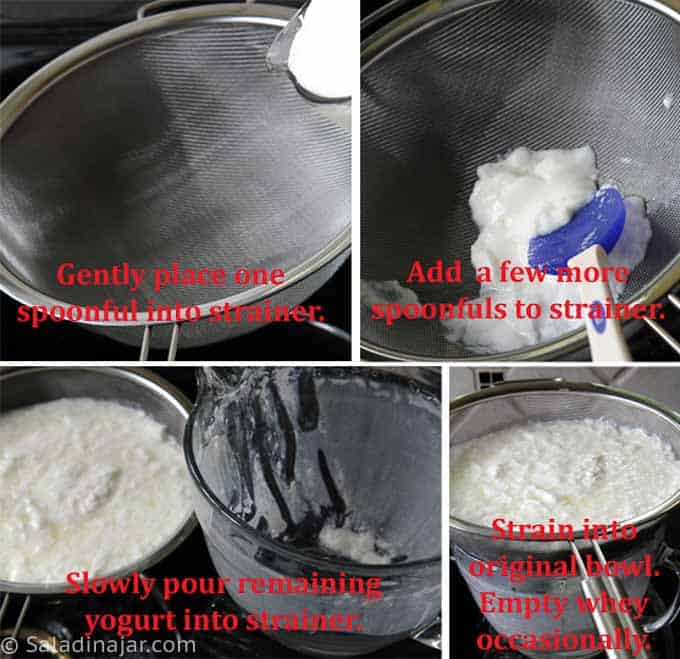An Easy Way To Strain Yogurt Without Cheesecloth
Sneak Preview: Read about this easy way to strain yogurt without cheesecloth. Instead, use a fine mesh strainer to turn regular yogurt into Greek yogurt.

As an Amazon Associate, I earn from qualifying purchases.
The best way to make regular yogurt into Greek yogurt is to strain it. Most people advocate cheesecloth for the process, but I have a different solution. Keep reading.
No problem if you don’t make your own yogurt at home. This same method will work with store-bought regular yogurt.
Why I Don’t Like Cheesecloth
When I first started making yogurt, everything I read suggested cheesecloth or coffee filters as part of the straining process to remove the whey (seen below).
A coffee filter was too small, so I purchased a cheesecloth to use with the cheap strainer I already owned.
The cheesecloth worked all right, but I was not too fond of it. Too messy. Can you relate?
Although the thickened yogurt peeled off easily enough, some of it stuck. I had to use a spatula to scrape it clean.

Then I had to rinse the cloth, squeeze it out, find a place to hang it to avoid mildew, wash it the following weekend (because I refuse to do laundry more than once a week), dry it, fold, and then iron it.WHEW!
Of course, I still had to clean the strainer.
(I was kidding about the ironing.)
A Better Idea–Look for a Fine-Mesh Strainer
Then I got the idea to look for a strainer with mesh so fine it would require no cheesecloth. The end of my search was a bouillon strainer(paid link).
Unfortunately, it was expensive. But, at the time, the investment was well worth it, in my book. (Read more about why I love my Matfer strainer.)
I know some people claim using cheesecloth is not that much trouble. But I prefer to skip it in favor of a good strainer that goes straight into the dishwasher. Talk about easy cleanup!
ADDENDUM:
Since writing this post, I have a new method of straining yogurt that includes using a paper coffee filter–the huge ones like restaurants use. They are available at restaurant supply stores and online. See this post for more information.


Three Qualities To Look for in a Strainer
#2
Consider the configuration of the strainer.
It can affect the strain time. The conical shape of my favorite strainer seems to work faster than the shallow-bowl shape of the cheaper strainers because of the larger surface area. It’s not a big deal, I guess, but it’s one more reason to pay a little more if you’re a serious Greek yogurt fan.
#3
Consider your volume requirements.
The bigger, the better. Straining in batches is a hassle. I make more than a gallon of yogurt a week, so you can imagine how difficult it would be to strain 1 or 2 cups at a time. My favorite strainer will hold 2 quarts– a perfect match for the 2-quart batter bowl I use to incubate my yogurt.
Three Important Tips Regarding the Straining Process
1. The temperature of the yogurt will affect the time required to strain.
The colder the yogurt, the longer it will take to drain the whey.
2. Try this kitchen secret to avoid losing too many solids.
First, wet the strainer. Then, follow the instructions in the pictures below.
3. Avoid stirring yogurt in the strainer.
If you see whey collecting on top, tip it slightly to allow the liquid to run to the sides. Stirring the yogurt while it’s straining may cause you to lose more solids than normal.

Depending on how much whey is drained, the strained yogurt will look something like ricotta cheese or even thicker. Whisk it well. If it is too thick, add some whey or milk back in until the consistency is perfect for you.

What If My Yogurt Runs Through the Strainer?
If your yogurt immediately runs through the strainer, it didn’t set correctly. Unfortunately, you can’t just set that batch back in your incubator. Once you stir or disturb the yogurt in a major way, you must add a new starter. These are some options if that happens:
- Add more fresh starter and try re-incubation. No guarantees on this. Sometimes it works. Sometimes it doesn’t.
- Use several layers of cheesecloth or paper towels to reinforce the strainer. (I do this only when desperate because it takes forever to strain yogurt that isn’t quite set.)
- Abandon the whole idea and drink your thin yogurt.
- Use it in place of buttermilk in your baking.
- Make ricotta cheese with it.
Are you confident about your technique for making yogurt? Just for fun, here’s the way I do it.
Video: How To Make Homemade Greek Yogurt
If you have questions or suggestions, email me privately for a quick answer: Paula at saladinajar.com. Hope to see you again soon!



Paula Rhodes, owner
As a retired home economist, I created Saladinajar.com to share my belief that you don’t have to be a chef to find joy in creating homemade food worth sharing. Bread machines (used in an unconventional way), homemade yogurt, and quick microwave recipes are my specialty.